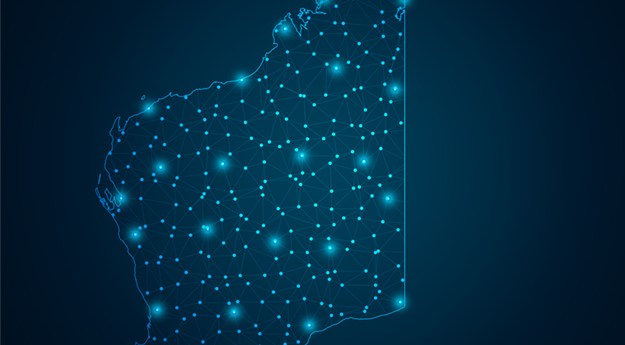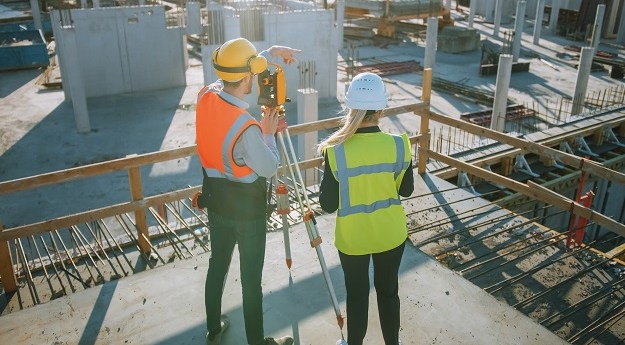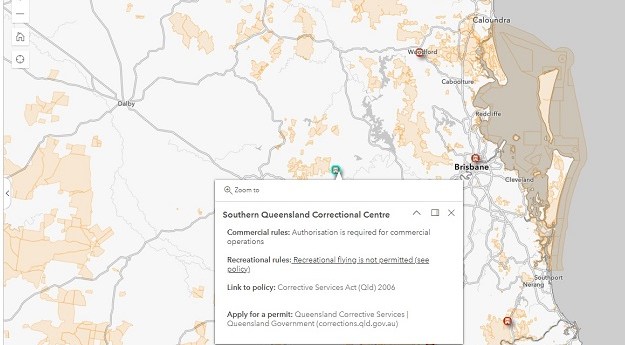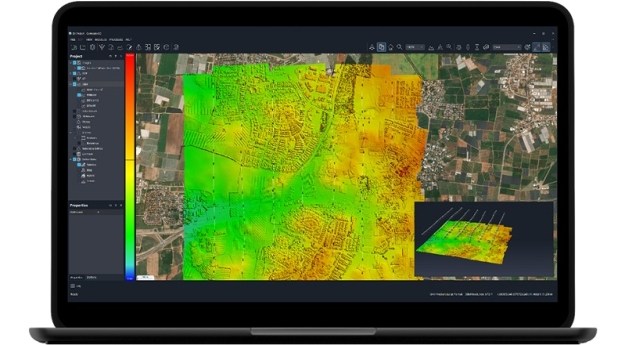
This article was authored by Vincent Tran and Dr. Craig Roberts and was originally published in issue 110 of Position magazine.
For more than two centuries, utility services have been buried underground with little thought of how to locate them at some time in the future. As our cities densify, we are squeezing more infrastructure into tighter spaces and the knowledge gap in the location of utility services is holding up progress on future development projects. This has created a market for specialist ’locators‘ who use a range of techniques such as interpreting archive drawings and plans, electronic detection, GIS, ground penetrating radar (GPR), potholing and surveying (total station and GNSS) to identify the position on the surface and depth of various services within certain error margins.
Concurrently this need prompted the drafting of the AS5488 Classification of subsurface utility information standard, which seeks to locate existing subsurface utilities and then map where they are for future users. The confluence of high-precision GNSS positioning aided by CORS networks and more recently multi-GNSS PPP services enables non-specialist users to easily locate points on the surface of the Earth to 10cm or better. What if we could cross reference position, with a database of existing locations of utilities and provide a heads up display for users to visualise these hidden services ‘live’ in the field?

Vincent testing his AR app using the Eos GNSS RTK kit on campus at UNSW.
Enter Augmented Reality
Well, this is not a new idea. Gethin Roberts proposed this at the FIG Congress in Washington DC almost two decades ago (Roberts, 2002). Various other researchers have investigated this further and recently Trimble Site Vision have released a commercial product that does just this. I was impressed by SiteVision when I first saw it in the flesh at the SEASC2019 conference in Darwin (remember face-to-face conferences). I proposed an Honours research project and final year student Vincent Tran took up the challenge with gusto.
Firstly, we borrowed a Trimble SiteVision device for two weeks to take it through its paces. Big thanks to Peter Burgin and Peter May at UPG Solutions for a test drive. It was a very impressive unit leveraging Trimble’s unique RTX technology to provide 4cm level positioning in real-time and displaying a pre-calculated database of underground utility services for demonstration purposes. The device requires the user to measure two points separated by a minimum of 8 metres for orientation, and thereafter a range of features enable the user to easily locate where and how deep services are situated. It really was surprisingly easy to use and gave us some ideas on functionality.
Vincent also owns an Android phone and dabbles with programming and suggested that he might be able to code up a similar sort of app – not as slick – but the same basic idea as the Trimble device. This is what an Honours research project is all about, so I encouraged him to pursue this ambitious goal. Within a week he was able to locate a virtual box in his living room and walk around it. A week later we were grappling with how to take the GPS feed from the phone into the app. The Android GPS provides Lat/Long, so referring to the new GDA2020 tech manual, Vincent was able to convert Lat/Long to Easting/Northing thanks to the Krueger Lambda series – no small task (refer to chapter 4 of the GDA2020 Tech manual to see the equations in glorious detail).
Using CAD, Vincent created a dummy set of underground utilities that would replace the virtual box and could be placed anywhere outside. Applying this app outside, Vincent found that the GPS from the phone was only good to a few metres at best (single point positioning), and as newly updated positions streamed into the app, the whole database jumped accordingly. We needed a better GPS solution.

Screenshot from the Eos GNSS RTK device running on an Android.
“We’re going to need a better GPS.”
At the time, I was teaching 3rd yr Geodesy. This is a course where I try hard to keep up with the latest in GNSS innovations. I was struck by the new Eos Arrow line of multi-GNSS receivers from Canada. They are a compact box with a high-quality external antenna which could Bluetooth to an Android device.
The top of the line Arrow Gold seemed like the best option for us, so I jumped on the Eos website in Canada looking for an Australian distributor and low and behold if it wasn’t my old friend, Peter Terrett from 4DGlobal.
Peter couldn’t help us enough, lending us his top-of-the-line Arrow Gold device and providing all manner of tips and advice on how to set it up. In no time at all, Vincent was connected to CORSnet-NSW and receiving cm-level positioning on the device. The app recognised the position solutions as if they were coming natively out of the Android device, except now they were accurate to a few cms. The device worked even better when Peter reminded us to set it to stream the latest RTCMv3.2 format designed for multi-GNSS not just GPS/Glonass. (For more on multi-GNSS see Everything the modern surveyors needs to know about multi-GNSS (and was too afraid to ask)). The initialisation was now lightning fast and the position very stable and reliable even in difficult environments – important for utilities location.
With some fine tuning, Vincent had developed a proof-of-concept app that could provide a real time AR environment to locate utilities. Now for a case study.

Screenshot from Vincent’s AR app with his shadow – reality vs AR.
Back to (augmented) reality
Vincent performed a Dial before you dig (DBYD) search in his local street and identified eight different types of services including water, gas, electricity and telecommunications. From this info, he tried to create a database of services, but it was hard to interpret where some services might actually be located on the ground.
We consulted former UNSW graduate and now professional Locator, Mitch Bradac and his colleague Timothy Laidler from LocateandMap for some much-needed advice. We located the inspection points of some services and tried to shift the geometry of the DBYD-supplied plans to fit these surface locations. This was a fiddly task and it soon became apparent that the plans were not to scale and were just graphical representations of the locations of the services. Being a student project, we stopped short of digging up the neighbour’s garden to find said services.
Some plans located services off the cadastre, but we didn’t know which cadastre. The cadastre changes over time. Others showed their utilities located off fence lines. Every surveyor knows that fences do not equal boundaries. Some showed depths related to the ground surface but no indication of when, and others stated that their services shared trenches/ channels with other services. It really was guesswork to align all the services and very uncertain. A common theme for all DBYD services is that none took any liability for the location of their services and none used the new modernised MGA2020 datum and/or AHD heights.
This experience highlighted the real problem now faced. The technology is ready. An Honours student research thesis can produce a rudimentary Augmented Reality app to locate services in the field. It is the spatial data locating these services that is lacking.
Releasing the brakes
In the recent paper Positioning Australia for the future (2020), Brown and co-authors refer to the European GNSS Agency Market Report which states that location-based services (such as augmented reality, intelligent transport and emergency services) are expected to account for 93.5 percent of future GNSS chipset sales. Further, the Australian economy is expected to grow by an additional $73B by 2030 due to augmented positioning. Poor legacy data is putting a brake on the economy.
The AS5488 has gone some way to addressing this, and the current 2019 document will be further revised to add MGA2020 coordinates as a suggested option for all future services located – but what about the access of existing legacy data? What happens to the data that companies like Mitch’s uncover? Is it all commercial in confidence? DBYD is really just a postal service. It is the custodians of the data who have the choice of either providing useful positions for their services to benefit the wider community – but currently none do. It seems the threat of liability is too high, so the actual location of services remains a mystery.
Consider this: the NSW Digital Cadastral Database (DCDB) evolved from manually digitising large scale mapping in the 1980s. Most other Australian states and Territories followed, but the resolution in some regions was poor. As the geodetic network and survey techniques improved, it was legislated that surveyors were required to coordinate cadastral boundary corners as part of their workflow by connecting their plans to at least two established survey marks. Nowadays, much of the DCDB, whilst not a legal representation of the cadastre, is survey accurate. The DCDB is one of the most useful spatial data layers because of this foresight back in the 1980s.
With the evolution of GNSS positioning supported by the new modernised GDA2020 datum, surely now is an opportune time for some similar governance to be imposed on the location of underground utilities for the benefit of all. Watch this space.
Stay up to date by getting stories like this delivered to your mailbox.
Sign up to receive our free weekly Spatial Source newsletter.












